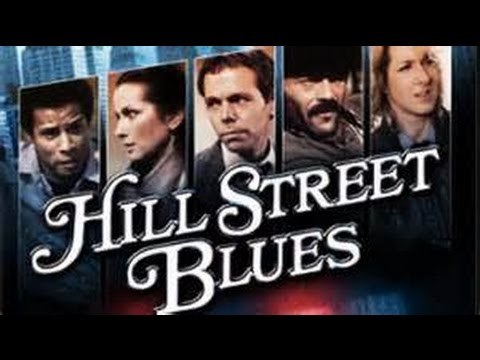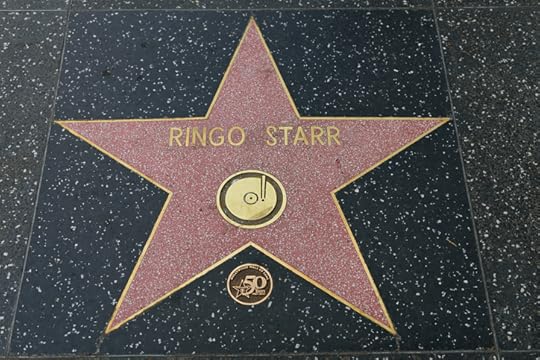Bathroom Readers' Institute's Blog, page 42
April 6, 2018
Buy Me Some Peanuts and Pickles Stuffed With Hot Dogs

The 2018 baseball season has begun, which means it’s time for a roundup of the weirdest and most delicious sounding new concessions available at America’s major league stadiums.
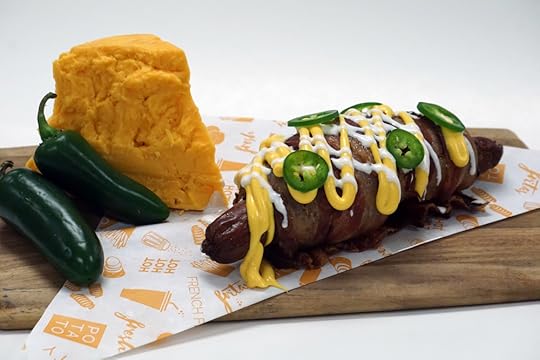
Spec-Tater
SunTrust Park is where the Atlanta Braves play, and it’s also the only place where spectators can buy a Spec-Tater. It’s a big baked potato stabbed with a sausage…which itself has been stuffed with cheddar and jalapeños. Then the whole thing is wrapped with bacon, and then topped with cheese sauce, sour cream, green onions, and some more jalapeños.
Strawberry Fields
Citi Field is home to the New York Mets and something called Strawberry Fields. It starts with a humongous Belgian waffle about the size and shape of a catcher’s mitt, which is topped with a heaping scoop of strawberry cheesecake ice cream, sprinkles, whipped cream, Pocky (Japanese cookie sticks), and a handful or so of French Toast Crunch cereal. (Waffle? Cereal? This is basically breakfast, so that means it’s healthy.)
Dilly Dog
Dilly dilly! Globe Life Park in Arlington is doing remarkable things with hot dogs for Texas Rangers fans. The Dilly Dog begins with a jumbo dill pickle that’s been cored, leaving behind just a dill pickle skin. Into that is stuffed a hot dog…and then the sausage-stuffed pickle is battered, fried, and served on a stick like a corn dog.
Triple B. Fried Bologna Sandwiches
Also on the menu at Globe Life Park: The Triple B. Fried bologna sandwiches are on the menu at more than one ballpark this year, but this one is the biggest. From bottom to top, it consists of a bun, bologna, bacon, more bologna, more bacon, barbecue sauce, and the top bun. (That means it’s technically a Septuple B.)
Chick-Ago Sandwich
Of course you can get a traditional Chicago Dog at Wrigley Field, or you can watch the Cubs play while eating a Chick-Ago Sandwich. Instead of a sausage, it’s got boneless breaded pickle-brined chicken thighs…but then it’s topped with the usual Chicago Dog toppings, such as sport peppers (although these have been dried), tomatoes, and celery salt.
Buffalo Cauliflower
Not every baseball concession item has to be an artery-clogging or blood sugar-sabotaging gut-bomb. Comerica Field in Detroit is making a point to offer vegetable-based options to attract vegetarians and meat-avoiders to Tigers games. One of those new items is Buffalo Cauliflower. It’s most of a head of cauliflower tossed in the same spicy buffalo sauce usually used to coat chicken wings. Also, like wings, it’s served with blue cheese dressing and celery sticks (which is just more vegetables).
The post Buy Me Some Peanuts and Pickles Stuffed With Hot Dogs appeared first on Trivia Books and Facts | Uncle John's Bathroom Reader.
Help, I’m Having a Maladaptive Brain Activity Change!

In science, there’s a word for everything—especially all the weird and gross things your body does and makes.
Ice Cream Headache
If you eat ice cream too fast, you’re going to give yourself an “ice cream headache” or “brain freeze.” But what are you supposed to do? If you eat ice cream (or a popsicle, or a slushy…) too slow, it melts. And so, we risk that brief but intense headache. The scientific name for that particular minor trauma is called sphenopalatine ganglioneuralgia.
Brain Fart
It’s not a very couth term, but it’s a very descriptive term: “brain fart.” That’s when your brain “shorts out” and you blank out for a second when you’re talking or thinking and suddenly, for a moment, the words or thoughts don’t come. This temporary mental break is more properly known as a maladaptive brain activity change.
Food Coma
You know that feeling you get after Thanksgiving—when you’re so full that you just can’t pay attention to the football game or A Charlie Brown Thanksgiving for another second and doze off right there in a cozy recliner? That’s not because of the tryptophan in the turkey—you’re in a “food coma,” the slang term for eating so much your body needs to go unconscious for a while. This sleepiness after mass ingestion of calories can happen any time of year, and it’s called postprandial somnolence.
Eye Gunk
There are lots of names for that eye gunk that forms in the corner of your, uh, eyes, especially during sleep. They’re named everything from eye gunk to eye crust to crusties to sleep stuff. It’s a crumbly bit of junk made up of dust, oils, dead skin cells, mucus, and other stuff that accumulates because your eyes are too inactive during sleep to properly dispose of it. Its name: rheum.
Déjà Vu
Have you read this before? Maybe, but not here…but it just “feels” like you did? It sure sounds like you’re experiencing “déjà vu.” There isn’t a good phrase in English to describe that eerie sense of re-living a moment, so we just use the French one—it translates to “already seen.” Not only the French have a word for that weird feeling. Psychologists call it paramnesia.
The post Help, I’m Having a Maladaptive Brain Activity Change! appeared first on Trivia Books and Facts | Uncle John's Bathroom Reader.
April 5, 2018
History and Origins of Burritos
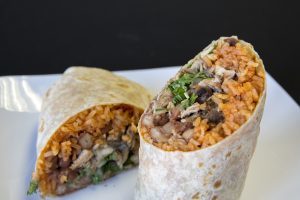
Here’s a look into the history and origins of the lauded Mexican fast food item.
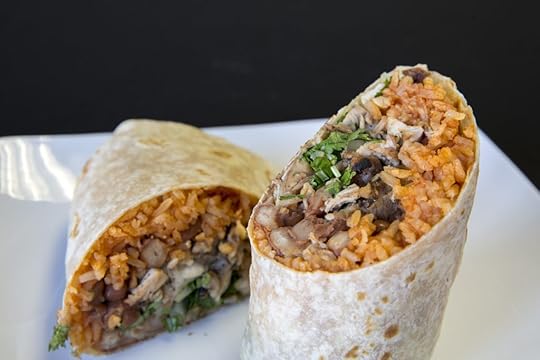
A burrito is a Mexican or Mexican-inspired food, and since Spanish is the main language in that country, burrito is a Spanish word. It translates to English literally as “little donkey”—burro means donkey and the ito makes it diminutive. What’s the meaning of that? Etymologists think that the burrito is so named not because it looks like a donkey (nor was it because donkey meat was ever used), but because a tightly-packed and rolled burrito looks like a bedroll or packs that a burro put to work would carry.
There’s another theory about the name, and it relates to one of the supposed inventors (or popularizers) of the food item itself. In the 1910s and 1920s, a street vendor named Juan Mendez started out selling tacos in the Mexican city of Juarez. To get his supplies to the street each day, he carried them on a donkey, a.k.a. a burro. At some point, he decided to keep the homemade food items warm by tightly wrapping them in a huge flour tortilla…until he realized that that was a pretty good way to serve up the ingredients in the first place.
However, the story of Juan Mendez inventing (and or naming) the burrito in such a way might be apocryphal. Dictionaries of Mexican phrases date the origin of the word to 1895…more than a decade before he set up shop in Juarez. An entry in the Diccionario de Mexicanismos says that a food item called a burrito, consisting of a rolled tortilla filled with meat and other ingredients, was popular in the central Mexican state of Guanajuato. The same food was eaten in areas like Yucatan and Mexico City, where it was known as a cocito and taco, respectively.
Those burritos were much smaller than the giant tortilla packed tightly with meat, beans, cheese, rice, and sour cream served by Taco Bell, Chipotle, and other American restaurant chains today. The American style burrito popped up in the 1930s. A restaurant in the Mission District of San Francisco called El Faro reportedly whipped up a batch of double-size burritos for a group of firefighters, only for operator Febronio Ontiveros to realize that most everyone would and could enjoy a giant burrito filled to the breaking point.
The post History and Origins of Burritos appeared first on Trivia Books and Facts | Uncle John's Bathroom Reader.
April 4, 2018
The Bushes Vs. The Simpsons
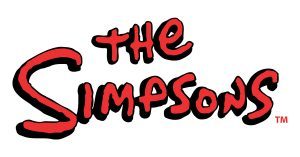
The early ‘90s gave rise to one of the strangest family feuds of all time: The Bush family—as in President George H.W. Bush and First Lady Barbara Bush—and the Simpsons…as in the fictional one from TV’s The Simpsons. This dispute had some near-Hatfields and McCoys levels of tension.
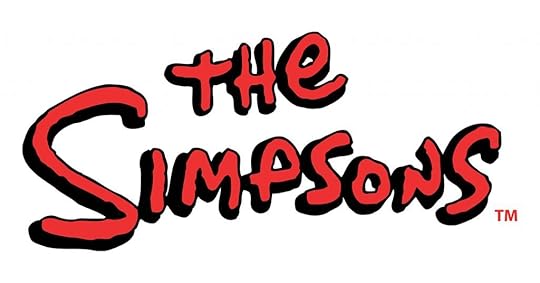
“The dumbest thing I had ever seen.”
A few of the things America couldn’t get enough of in 1990: Wilson Philips. Dances with Wolves. And The Simpsons, the newly launched animated primetime hit on the upstart Fox network, formerly a series of vignettes on The Tracey Ullman Show. People bought T-shirts with Bart Simpson saying “don’t have a cow, man!” and Homer saying “D’oh!” by the truckload. Decidedly not a fan: First Lady Barbara Bush. In an October 1990 interview with People, Bush derided the dreck passing for popular culture, and she singled out The Simpsons as “the dumbest thing I had ever seen,” adding “but it’s a family thing, and I guess it’s clean.” The media ignored the backhanded compliment and mostly only spread the first part.
The Writer’s Response
Bush’s public diss of The Simpsons was big news, and of course made its way back to the people who made The Simpsons. A room full of clever, funny writers could have easily issued a cutting response, but they didn’t. Instead, they wrote a letter (made public) to Barbara Bush in the character of kindly Marge Simpson. “I recently read your criticism of my family,” Simpson wrote. “I was deeply hurt. Heaven knows we’re far from perfect and, if truth be known, maybe just a wee bit short of normal; but as Dr. Seuss says, ‘a person is a person.’”
The Apology
Bush duly apologized in letter form. “I am looking at a picture of you, depicted on a plastic cup, with your blue hair filled with pink birds peeking out all over. Evidently, you and your charming family are camping out. It is a nice family scene. Clearly you are setting a good example for the rest of the country.”
1992 Campaign
Everything was settled…until 1992, when President Bush ran for re-election. At a convention for broadcasters, he promised to “keep on trying to strengthen the American family, to make American families a lot more like the Waltons and a lot less like the Simpsons.” The Simpsons fired back, editing a clip of Bush’s speech playing on the family TV, after which Bart says, “Hey, we’re just like the Waltons. We’re praying for an end of the Depression, too.” The Simpsons won that round…and Bush lost the election.
Sour Grapes
But the taste of sour grapes apparently lingered. In 1996, The Simpsons aired an episode called “Two Bad Neighbors.” A send-up of Dennis the Menace, former president George H.W. Bush moves in across the street from the Simpsons, and Homer and Bart make his life a living nightmare, forcing him to move out…and the Homer-like Gerald Ford to move in.
The post The Bushes Vs. The Simpsons appeared first on Trivia Books and Facts | Uncle John's Bathroom Reader.
April 3, 2018
Steven Bochco’s TV Bombs
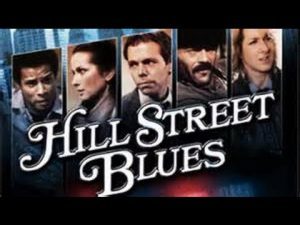
There are only a few TV producers and TV show creators whose names are as famous as TV stars—people like Norman Lear, Garry Marshall, Shonda Rimes, and Steven Bochco, who died this month at age 74.
Steven Bochco was a TV innovator who developed and produced classic, groundbreaking shows like the gritty and harrowing police dramas Hill Street Blues and NYPD Blue, the legal drama L.A. Law, and even Doogie Howser, M.D., one of the first laugh-track free sitcoms. But innovators have to take risks—like Bochco did when he took a shot with some weird high concept shows…that were quickly canceled.
Cop Rock
Nobody could make a more crime drama than Bochco, which means the police, crime, and courtroom scenes in the 1990-91 series Cop Rock were quite well done. However, Cop Rock was also a weekly musical series with Broadway-style showstopping song-and-dance numbers. This meant that every so often, the searing drama could screech to a halt so the cops, criminals, and judges could sing an original song written by Randy Newman. Cop Rock was canceled after 11 episodes.
Turnabout
Bochco wrote the pilot for this 1979 show, which was based on the 1931 novel Turnabout. It’s sort of like if Freaky Friday if it were a sitcom about a married couple and also the body-switching never ended. A couple buy a cursed magic statue, which makes their spirits switch bodies. Only seven episodes aired before it disappeared.
The Gemini Man
One of Bochco’s first series was this 1976 science-fiction series akin to The Incredible Hulk or The Six Million Dollar Man. It’s about a secret agent who gets injured in a diving accident…and realizes he now has the power of invisibility. There are some caveats, however: He can only go invisible for 15 minutes a day (or he’ll die), and he turns the power on and off with a special watch. The Gemini Man permanently went invisible (meaning it was canceled) after six episodes.
Capitol Critters
When Fox’s The Simpsons became the first successful primetime cartoon in decades in the early ‘90s, the other networks wanted in. In 1992, ABC said yes to Bochco’s Capitol Critters. Set in Washington, D.C., it satirized human politics by showing the shady deals brokered by the literal rats, mice, and vermin politicians who lived in and ran Washington, D.C.’s sewers. Capitol Critters lasted just 13 episodes.
NYPD 2069
NYPD Blue wasn’t the only NYPD series Bochco worked on. In 2004, he created a series (and filmed an unsold pilot for) this futuristic series about a cop named Franco in the early 21st century who gets shot by arch rival, a criminal named Kroger. He’s declared brain dead, but doesn’t die…and wakes up in the year 2069. Franco teams up with his cop grandson to take down Kroger once and for all, who is still running a criminal empire at the age of 99.
The post Steven Bochco’s TV Bombs appeared first on Trivia Books and Facts | Uncle John's Bathroom Reader.
April 2, 2018
Uncle John’s Favorite Beatle is Ringo Starr
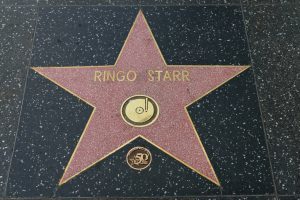
Here are some fab facts about the most underrated, overlooked, and mocked Beatle, Ringo Starr.
“Ringo Starr” is not his real name.
The “Starr” is short for “Starkey” and “Ringo” comes from his habit of wearing rings. Somebody called him that once and it stuck, which the drummer himself liked because he thought it made him sound like he was a cowboy.
He was the funny Beatle, after all.
When a reporter once asked him why he liked to wear so many rings on his fingers, Starr quipped that it was because he “couldn’t fit them all through my nose.”
There was life before the Beatles.
The Beatles fired drummer Pete Best and hired Ringo Starr because they heard he was the best drummer in Liverpool. Indeed, before he joined the Fab Four he played in a band called Rory Storme and the Hurricanes. (He’d also worked a ferryboat captain.)
Rise up, Ringo!
It’s standard today for rock drummers to play on a riser. That makes the musician just as visible as the rest of the band, instead of obscured behind a massive drum kit. It’s a practice that started with Ringo, because crowds and TV viewers wanted to see every Beatle, even the drummer.
Hold on tight.
Ringo revolutionized rock drumming…by how he held his sticks. Before the Beatles hit, rock and pop drummers held their drumsticks in the jazz or military band tradition—loosely, in a half-open hand. But rock needed power, so Ringo held his tight and banged down on his drums that way. Now that’s how most every rock n’ roll drummer plays.
Team player.
Of all of the Beatles many songs, there’s only one drum solo. Abbey Road’s “The End” features just Ringo and his drums.
A real pioneer.
Ringo is the first and only Beatle to release a disco album: 1977’s Ringo the 4th. He’s also the first and only Beatle with a full-length Christmas album: 1999’s I Wanna Be Santa Claus.
Who wants pizza?
Ringo Starr is severely allergic to garlic and onions…main ingredients in pizza, which Ringo plugged in a Pizza Hut commercial in the early 1990s.
The post Uncle John’s Favorite Beatle is Ringo Starr appeared first on Trivia Books and Facts | Uncle John's Bathroom Reader.
March 30, 2018
Ask a Question, Get an Answer: Hair You Go!

March 14 was “International Ask a Question Day,” and over on our Facebook page, we invited our readers to, well, ask a question and be entered in a giveaway. The response was overwhelming—hundreds of you BRI stalwarts posed a trivia conundrum. Unfortunately, we can’t answer all of them and not everyone can be a winner, but we did pick five of the most intriguing one…which we’re going to answer here. One of our winning questions comes from reader Kim J., who asked…
Why do some people have curly hair, and others straight? Can pregnancy change curly hair into straight, or vice versa?
Genetics
Whether your hair is curly, straight, or not quite either (we’ll call that “wavy”), it’s almost entirely due to genetics. Your hair’s consistency and shape is probably similar to one of your parents’ in particular. Studies that have examined hair samples across multiple generations of families found a “heritability” factor between 85 and 95 percent. This means that the relative straightness or curliness of your hair has about a 9 in 10 chance of being the direct result of genetics.
The Nature of the Follicle
But there’s more to it than just that. How curvy (or how not curvy) the individual strand of hair may be is also related to the nature of the follicle from which it grows, of course. For example, a symmetrical, straight follicle will produce a straight hair that grows straight out and upward. An asymmetrical follicle, on the other hand, will lead to oval-shaped hairs…which tend to curl as they curve.
The Scalp
Another part of the equation involves how the follicle interacts with the scalp from which it sprouts. A straight hair follicle follows, naturally, a straight path, from the surface of the skin all the way back down into an inner layer of the scalp called the dermis. However, if that path is angled into the dermis in any way, well, then the follicle comes out at an angle, and so does the hair…which makes for a curly hair.
Major Hormonal Shifts
To answer the second part of the question: Yes. Major hormonal shifts can temporarily or permanently alter the way hair grows. Puberty, menopause, and pregnancy can all make curly hair go straight, or straight hair start to curl. When a woman is with child, levels of hormones like estrogen and progesterone increase. Because of those heightened levels, hair stays on the head longer—the hormone increase delays the rate at which the body normally sheds hair. That, in turn, leads to changes in how the hair (and its follicles) produce new hair.
The post Ask a Question, Get an Answer: Hair You Go! appeared first on Trivia Books and Facts | Uncle John's Bathroom Reader.
March 29, 2018
Ask a Question, Get an Answer: Sneeze Eyes—Sneeze Eyes Cry Every Night for You

March 14 was “International Ask a Question Day,” and over on our Facebook page, we invited our readers to, well, ask a question and be entered in a giveaway. The response was overwhelming—hundreds of you BRI stalwarts posed a trivia conundrum. Unfortunately, we can’t answer all of them and not everyone can be a winner, but we did pick five of the most intriguing one…which we’re going to answer here. One of our winning questions comes from reader Jackie G.., who asked…
Why do you close your eyes when you sneeze?
Perhaps because it’s such a violent, explosive action that rocks the entire body, particularly the head, there are a lot of urban legends surrounding the sneeze. Goodness—people used to proactively say “bless you” out of a fear a sneeze would shoot a soul right out of a person’s nose-hole. More recently, you probably remember the old playground tall tale that a sneeze was so forceful it could send something more corporeal than a soul out of one’s noggin: Their eyes. That, the reasoning stated, was why it’s so hard—if not impossible—to keep one’s eyes open during a sneeze. The body simply has a natural defense system in place to keep the eyeballs where they belong in the event of a sneeze.
Are your Eyes Secure?
Good news: Your eyes are very secure in their sockets, and it’s going to take quite a bit to dislodge them, but it certainly won’t take something as common as a sneeze to do it. (That would be a serious biological flaw) Also, the eyes and nose don’t have a whole lot to do with one another…at least not during a sneeze The pressure exerted from a high-speed sneeze doesn’t get transferred to the eye sockets, more is there any kind of muscle behind the eye that pushes them out.
The Reflex
Nevertheless, when you sneeze, the eyes automatically close at the moment of snotty expulsion. Why? Like the playground tale suggested, there’s a reflex. The nose and eyes are linked in a sneeze only as much as they’re both on a cranial nerve pathway. The stimulation (and agitation) from a sneeze rapidly travels from the nose to the brain, then milliseconds later down another nerve to the eyes. That all plays out as a simultaneous sneeze and blink.
Cool Party Trick
However, there is the extremely rare individual whose brain doesn’t quite fire this way, meaning that they can keep their eyes open during a sneeze…if they want to. It’s a cool party trick, and they can do so without worry that those eyes will fly across the room and into the punchbowl.
The post Ask a Question, Get an Answer: Sneeze Eyes—Sneeze Eyes Cry Every Night for You appeared first on Trivia Books and Facts | Uncle John's Bathroom Reader.
March 28, 2018
Ask a Question, Get an Answer: (Fifth) Beatlemania!
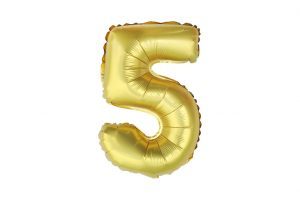
March 14 was “International Ask a Question Day,” and over on our Facebook page, we invited our readers to, well, ask a question and be entered in a giveaway. The response was overwhelming—hundreds of you BRI stalwarts posed a trivia conundrum. Unfortunately, we can’t answer all of them and not everyone can be a winner, but we did pick five of the most intriguing one…which we’re going to answer here. One of our winning questions comes from reader Scott S., who asked…
Which “fifth Beatle” is the “real” fifth Beatle?

Scott is referring to one of the most famous, exemplary, and unofficial statuses in rock n’ roll history: the fifth Beatle, referring to an associate of the Fab Four who was not technically part of the band, but still made such an impact on the band’s sound or success that they might as well have been. The Beatles became the biggest and most popular band of all time, and they got by with a little help from their friends, several of whom could make a claim to be the fifth Beatle.
The Mentor
The Beatles honed their chops in the early 1960s playing in clubs and dive bars in Hamburg, Germany. They were often the backing band for another British musician, Tony Sheridan. In 1962, Sheridan had a minor hit in West Germany called “My Bonnie,” credited to Tony Sheridan and the Beat Brothers (a.k.a. the Beatles).
The Ex-Beatle #1
John Lennon formed a band when he was a teenager called the Quarrymen, later renamed the Beatles. George Harrison played guitar, and Lennon’s old friend Stuart Sutcliffe played bass. He wasn’t as passionate about music as his bandmates, and he quit in 1961, just before the Beatles found huge success, to pursue painting. A year later, Sutcliffe died of a brain hemorrhage. (But he was, technically, a Beatle.)
The Ex-Beatle #2
Before the delightful Ringo Starr became the band’s drummer, Pete Best kept the beat for the Beatles. He was fired in 1961 because the rest of the band thought he was a mediocre drummer. (But he was, technically, a Beatle.)
The Producer
Brian Wilson is regarded as a true Beach Boy, even after he retired from playing live to write and produce the band’s music. By that logic, producer and arranger George Martin is a Beatle. He produced almost everything the Beatles recorded and wrote the string and horn arrangements found in their later work, helping the band find its ambitious sound.
The Almost-Beatle
Pianist Billy Preston played with the Beatles in Hamburg, and got back together with them in the late ‘60s to perform piano sections on “Get Back” and “Let It Be.” John Lennon wanted to make him a permanent, full-fledged member, but the rest of the Fab Four vetoed it. Preston is also the only person individually credited on a Beatles song, as is the case with “Get Back,” attributed to “The Beatles with Billy Preston.”
So, to answer Scott’s question is difficult because there are a lot of contenders with a valid argument as to why they’re the “true” fifth Beatle. However, if we have to editorialize, we’d go with George Martin. Or Billy Preston. Or maybe Pete Best? Okay, Stuart Sutcliffe. No, George Martin. Tony Sheridan, though…
The post Ask a Question, Get an Answer: (Fifth) Beatlemania! appeared first on Trivia Books and Facts | Uncle John's Bathroom Reader.
March 27, 2018
Ask a Question, Get an Answer: The Colorful World of Girls and Boys

March 14 was “International Ask a Question Day,” and over on our Facebook page, we invited our readers to, well, ask a question and be entered in a giveaway. The response was overwhelming—hundreds of you BRI stalwarts posed a trivia conundrum. Unfortunately, we can’t answer all of them and not everyone can be a winner, but we did pick five of the most intriguing one…which we’re going to answer here. One of our winning questions comes from reader Elaine C., who asked…
Why is pink the “girl” color and blue is the “boy” color?

Clothing Colors
It’s something that starts when we’re babies: Parents dress their newborns in shades of blue for a baby boy, and various pinks for a baby girl. (If anything, it helps identify babies, who don’t display a lot of gender-specific characteristics, to strangers: At a glance at the baby and their clothes, their gender, generally speaking, is conveyed.)
Marketing
It recurs throughout life, too—in western culture, pink is synonymous with girls and women, and blue is often viewed as a “male” color. Of course, there’s nothing innately feminine about the color pink, or masculine about the color blue. All of it came from marketing.
Dirty Laundry
Back in the 19th century, for example, parents dressed their babies, boys and girls, in white. That was born of practicality: It’s much easier to clean dirty baby clothes (with bleach or other chemical cleansers) than it is to clean colored garments, and babies certainly produce a lot of dirty clothes.
Back in 1918
Oddly enough, when pink and blue got assigned a gender, it was the opposite way of how it turned out. In 1918, a baby clothes trade magazine called Earnshaw’s Infants’ Department recommended “pink for the boys, and blue for the girls.” Why? “Pink, being a more decided and stronger color, is more suitable for the boy, while blue, which is more delicate and dainty, is prettier for the girl.”
The Color Switch
Gradually, over time, they switched. By World War II, women’s clothing featured feminine flowers, which are pink more often than they are blue. Trendsetting and influential designers started making pink for women and girls…and it just kind of stuck. Many fashion designers then, as now, are French, a culture in which pink is the traditional color for girls…and blue is the color for boys. That influenced the way they designed garments.
Baby Showers
Also helping to drive the point were baby showers. When science allowed expectant parents to know their baby’s gender before birth, companies could market gifts and nursery decorations to help them prepare: blue for boys, pink for girls.
The post Ask a Question, Get an Answer: The Colorful World of Girls and Boys appeared first on Trivia Books and Facts | Uncle John's Bathroom Reader.


